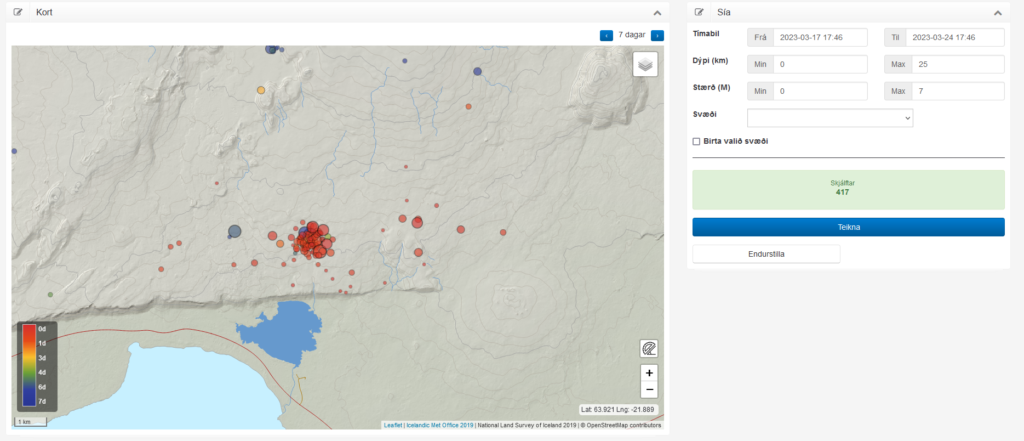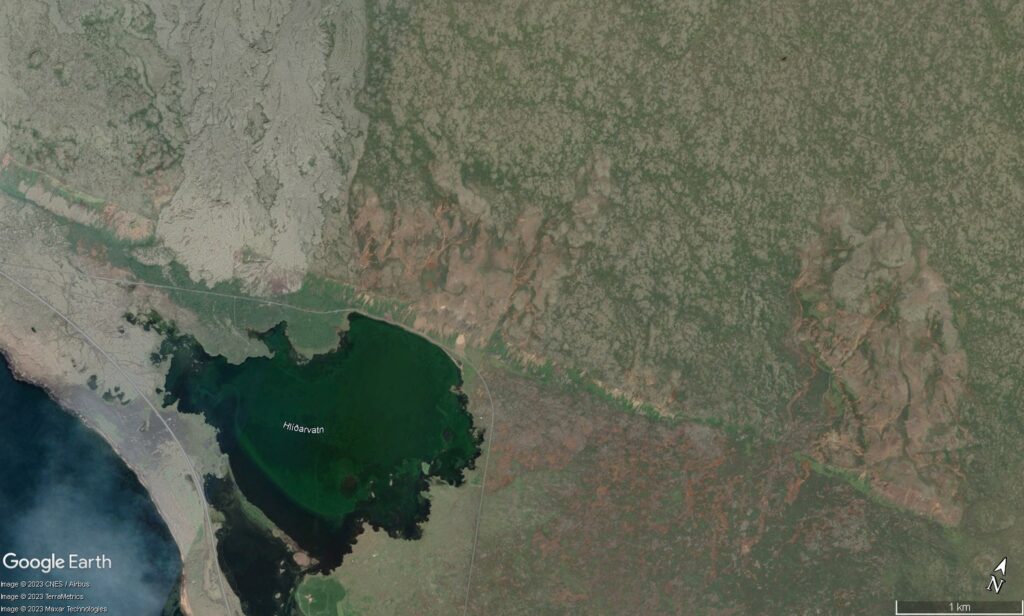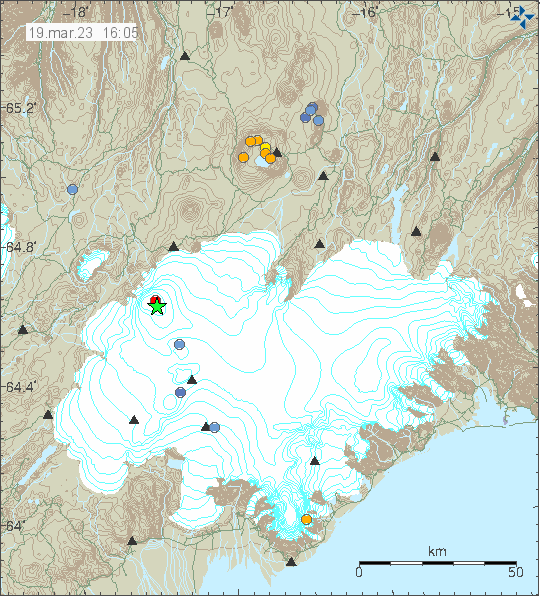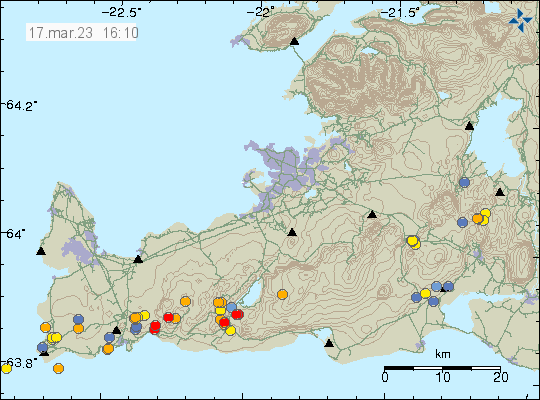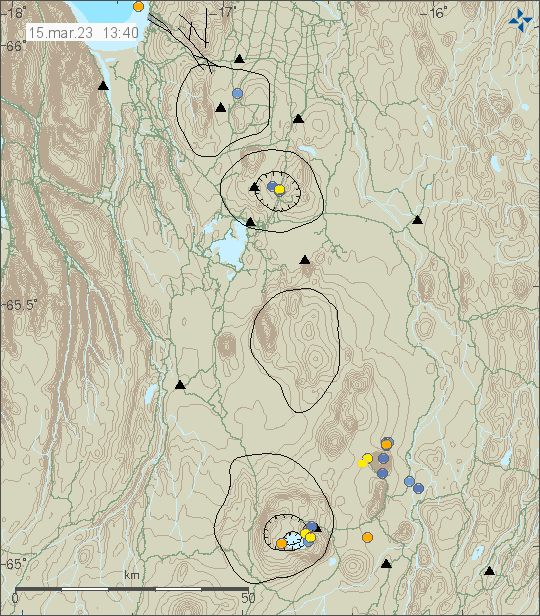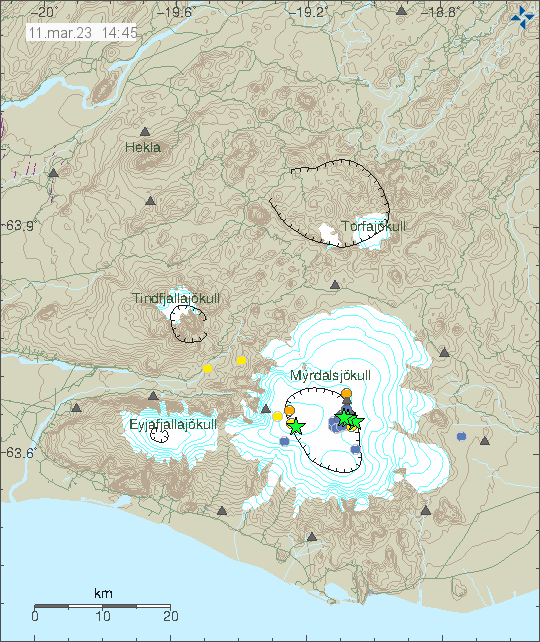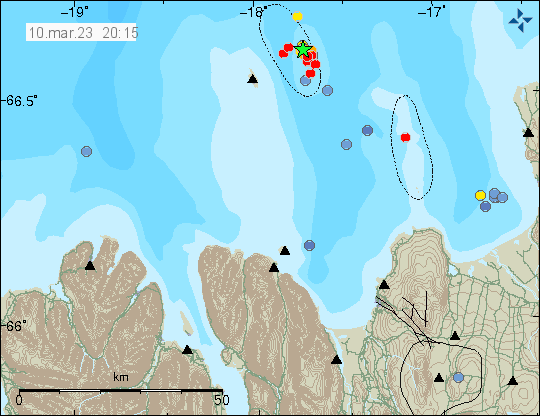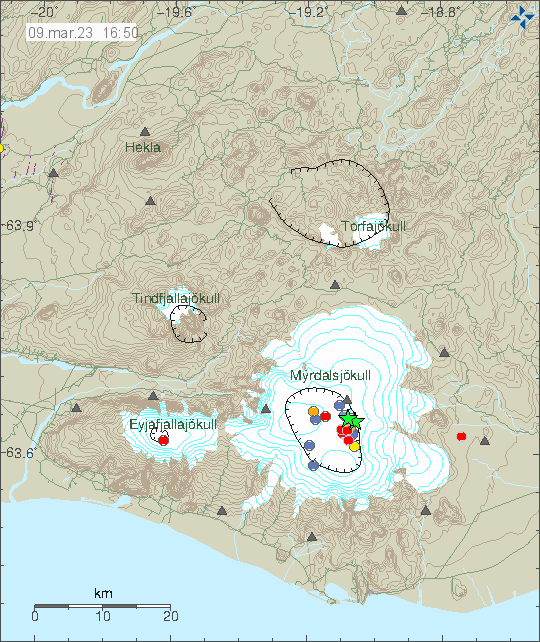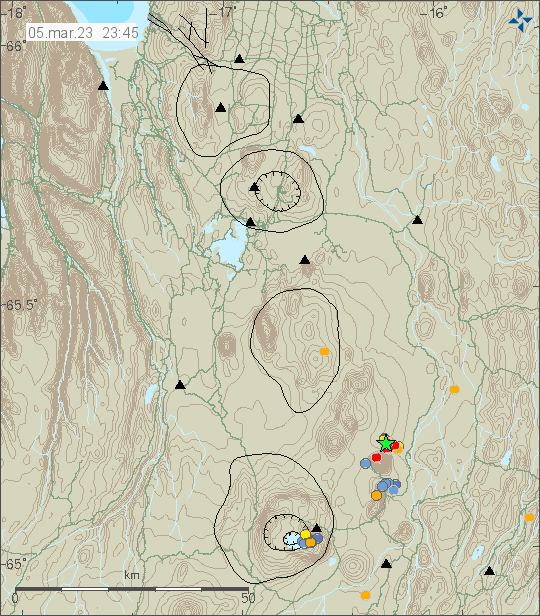An earthquake swarm in a volcano called Fremrinámar today (30. March 2023). This is the first time I’ve seen an earthquake swarm in this volcano. All earthquakes where small in magnitude and the magnitude range was from Mw0,1 to Mw1,0. Depth was 5,8 km to 9,1 km.
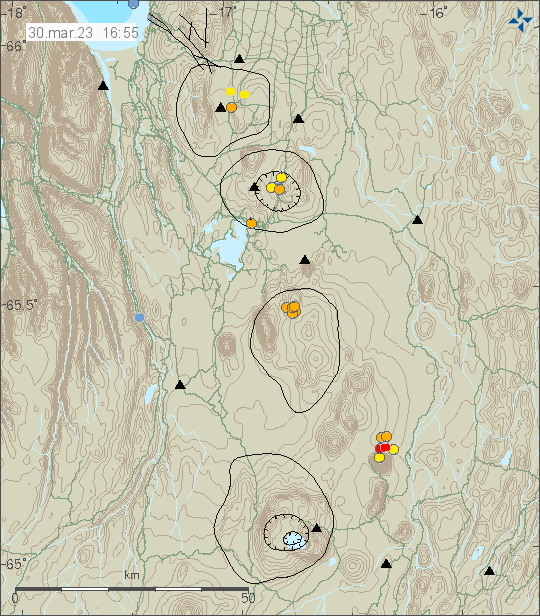
This is the first time I’ve seen an earthquake activity in this volcano. I’ve been monitoring earthquake activity for close to 30 years at the writing of this article. Last eruption in Fremrinámar volcano took place around 3200 years ago (1200 BCE according to Global Volcanism Program). There is a second (and I assume newly discovered) volcano north of Fremrinámar volcano and south of Krafla volcano called Heiðarsporðar. That volcano last erupted around 2200 years ago. This earthquake activity doesn’t seems to be in that volcano, but this map on Icelandic Met Office website is not fully up to date it seems. Based on the volcano website Catalogue of Icelandic Volcanoes. This earthquake activity is only mentioned here now, because I’ve never seen an earthquake swarm in this volcano before.


